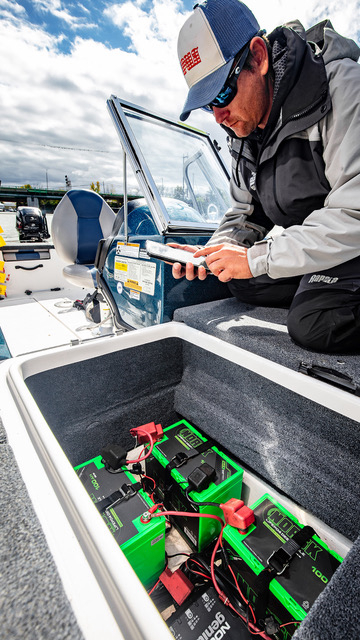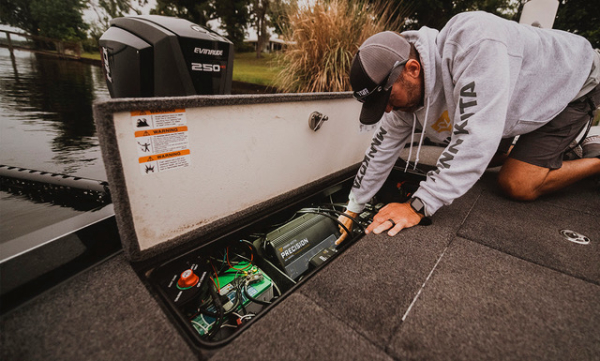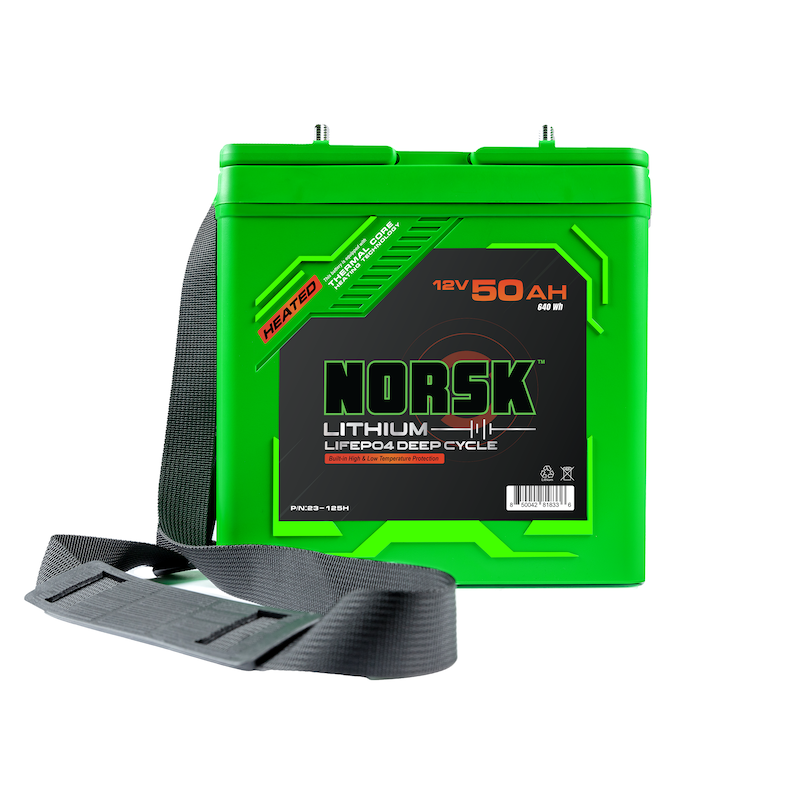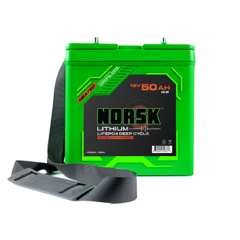Time for Lithium Batteries in Your Boat?
From Frank Sargeant

Lithium batteries have seen amazing growth in the fishing/boating biz over the last decade despite prices that are as much as 10 times higher than the conventional lead-acid batteries most of us are familiar with in our cars, trucks and boats.
Lithium-based batteries have a couple of huge advantages when they’re built right, which is why many serious boaters have invested in them despite the very high prices.
The most obvious is the extremely light weight, about 1/3 of what a lead-acid battery of similar output weighs, or even less in the case of the 36 volt models that can replace three lead-acid 12-volt batteries. Less weight is particularly important in smaller boats like flats boats, bass boats and kayaks, allowing them to float in less water and also deliver better performance.

Norsk is Among lithium batteries that can be monitored via bluetooth on any smartphone (Norse photo, with permission.
|
In the case of a flats boat with a 36-volt troller, the difference can be whether or not you can get up on a 12” deep flat or not. In bass boats, all that extra weight at the transom can mean water over the aft deck when you drop off plane quickly, and the weight also cuts top speed and reduces fuel economy.
The fact that one 36-volt battery takes the physical space of one 12-volt battery can also be huge in boats where space is limited.
It’s also apparently true that the best lithium iron phosphate batteries, properly cared for, now last 8 to 10 times longer than the typical lead-acid battery. They run longer on a charge, and they deliver full power almost right up to the point of shut-down. This is not only important for trolling motors, but also for the high-draw electronics many anglers use on their boats these days, with up to five 12” or larger screens on some boats. They also charge a lot faster than lead-acid.
On big boats, some manufacturers are now installing multiple high-output lithium battery banks in place of a gasoline or diesel generator to supply the “house” with air-conditioning, lights and other electrical needs. The batteries produce no dangerous fumes, no noise, and often weigh less than the generator they replace. The batteries are recharged while underway by the main engines, or at the docks by the usual shore power cord.
Some of the best include Bluetooth, allowing you to quickly check your remaining battery charge throughout the day via your smart phone.
Tracker Marine says their lithium iron phosphate batteries are good for 5,000 cycles vs. around 270 when comparing to a lead-acid battery, or 350 cycles for AGM. Other suppliers make similar claims.
The Negatives
There have been dramatic failures of lithium-ion batteries used in automobiles and other devices, resulting in fires that are very difficult to put out.
Note that lithium-iron-phosphate batteries are not the same thing, and present a very low risk of ignition not only per the builders but from independent agencies.
Lithium batteries are not approved as starting batteries for Yamaha or Suzuki outboards—but select models are OK for Mercury outboards—check with Merc for specifics. (Note that Mercury likes lithium batteries so much that they bought ReLiOn in 2021.)

Lithium batteries (like all batteries) lose a lot of power in temperatures below freezing. The best include built-in heaters that prevent issues, but these add to the cost. They also lose efficiency if they get very hot, but stowing them in the shade of a boat’s bilge area usually prevents that issue in marine use. It’s not wise to install them close to the exhaust system of an inboard boat, however.
Also, you need a lithium-approved charger to recharge your lithiums—some conventional chargers will damage them.
That’s great, but what about the cost?
Battery makers like Norsk say amortized over 10 years or more—in which you would have gone through the woes of replacing your lead acid batteries up to five times—the lithium batteries make a lot of sense. You pay more to start, but you don’t have to haul those heavy lead acid batteries out of the bilge before every other season for replacement. And you get better performance not only from the batteries but from your boat during the entire service period.
The warranty on some LiFEPO4 batteries is 11 years! (Considering that the cost on some of these is over $2,000, that’s a very good thing to know.) Lead acid batteries have warranties from 12 to 36 months, typically, and sell for between $125 and $225. Absorbed Glass Mat or AGM batteries, maintenance free, are a step up in dependability and power, but are more expensive, with prices of $200 to $300 typically.
And prices of lithium batteries are coming down as competition heats up. Some 36-volt models are available for around $900 now, while they were as much as $1300 a few years ago. Twelve volt LiFePO4 models are going for under $700 in some brands.
Here are some of the best-known suppliers:
— Frank Sargeant







